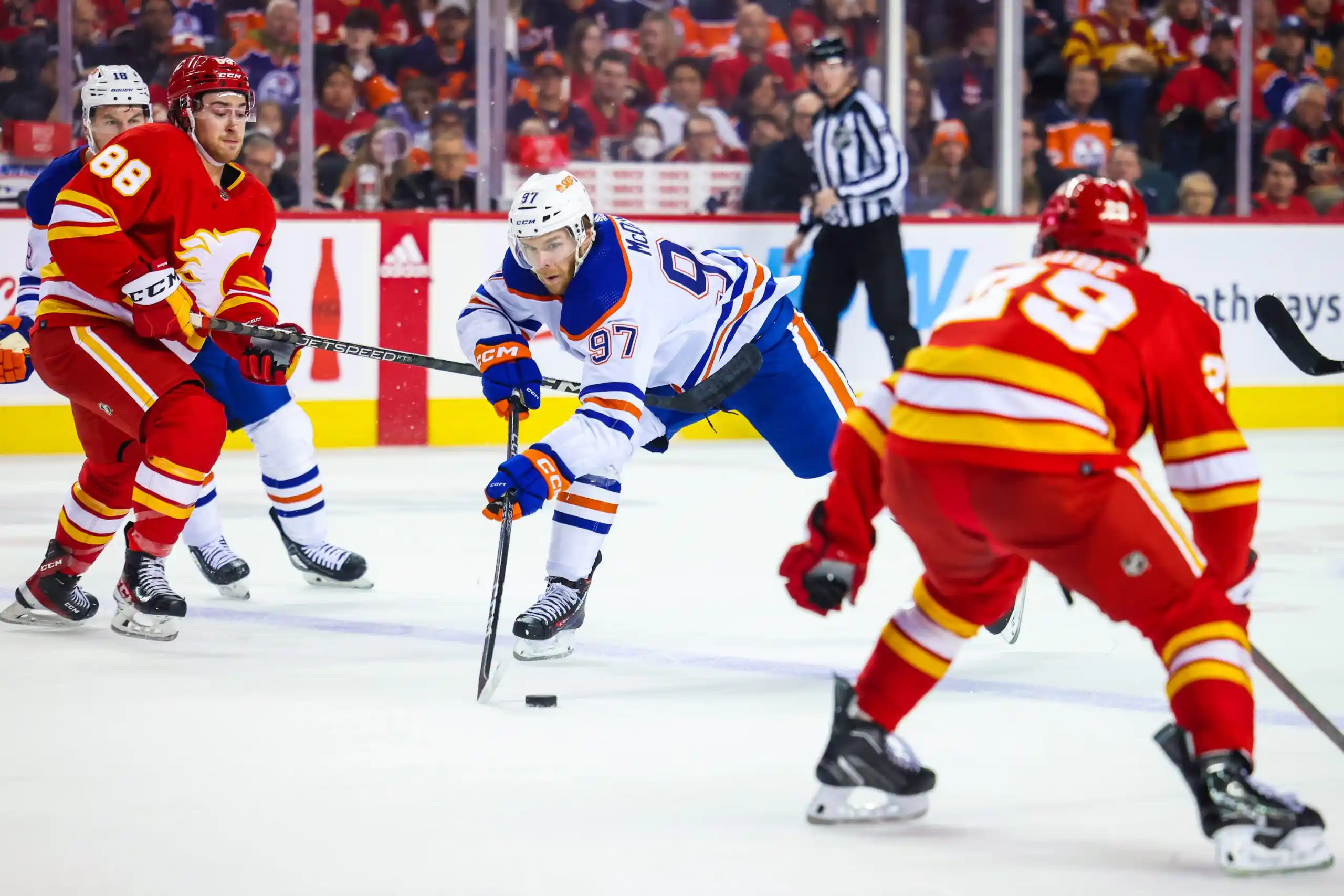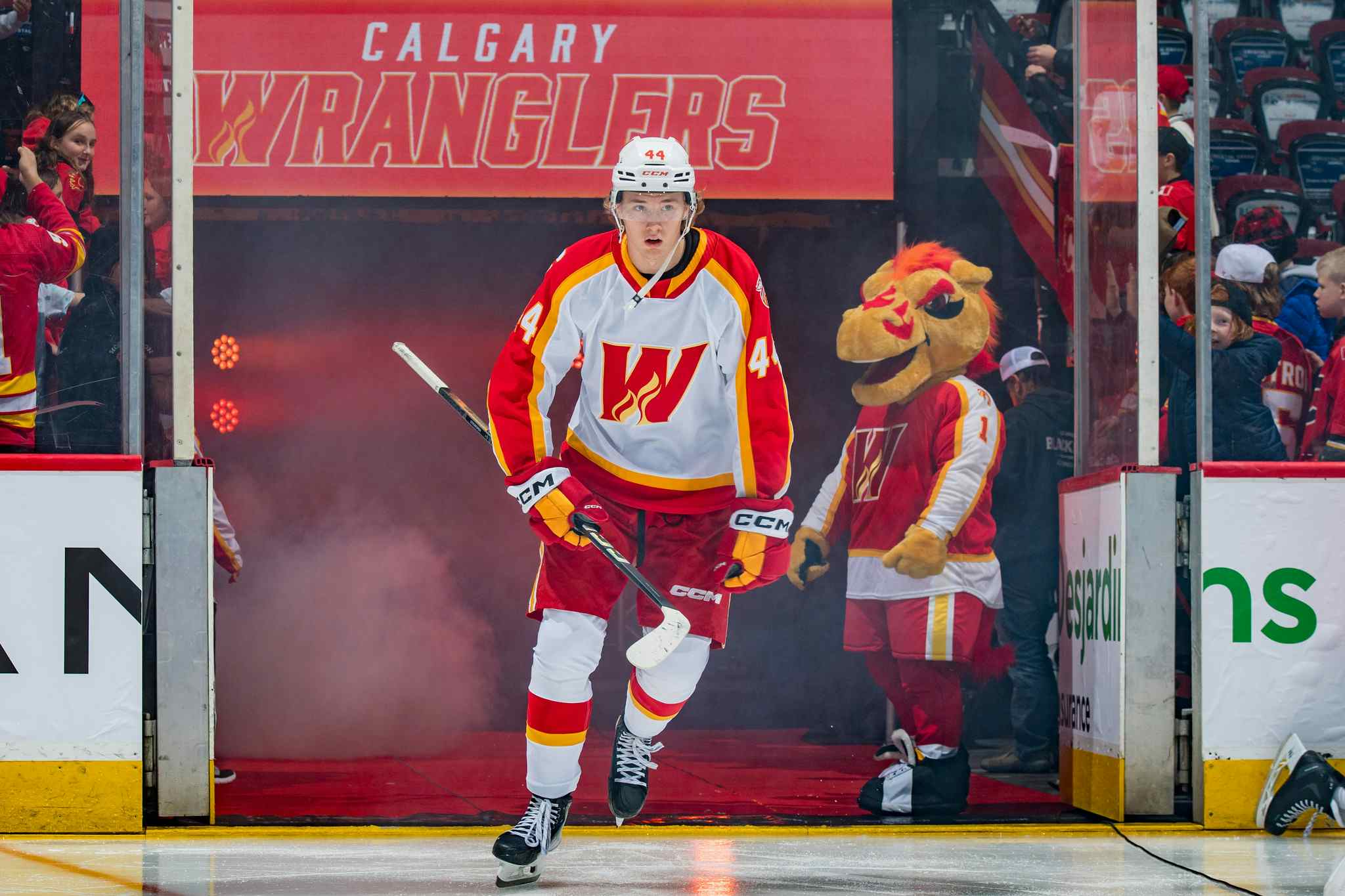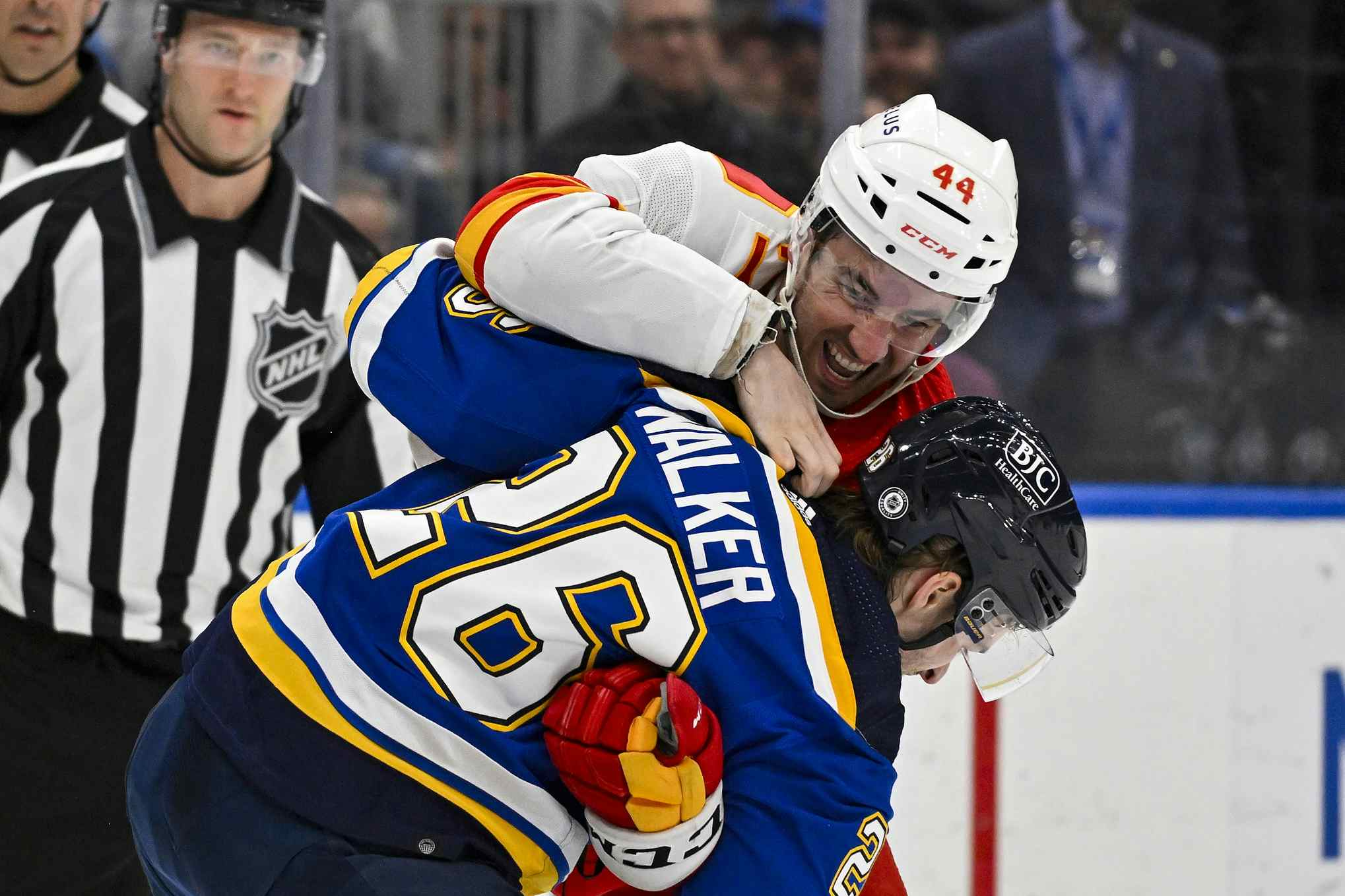The Flames will be different in 2020-21, but will they be better?

By Ryan Pike
3 years agoCalgary Flames general manager Brad Treliving has been a busy man since the 2020 post-season ended. Since the off-season commenced, he’s brought in four new faces via free agency that will impact how the 2020-21 Flames line-up compared to their 2019-20 edition.
But for all the changes the Flames have made, will they be a better team in 2020-21? We broke things down line by line and pairing by pairing to make some judgements about the nature of Treliving’s off-season tweaks.
Goalies
2019-20: David Rittich & Cam Talbot
2020-21: Jacob Markstrom & David Rittich
Verdict: Better. The younger Markstrom is a clear upgrade on Talbot and there’s the potential that Rittich can be more consistent if he’s not ridden as hard. (When he was a backup and used sparingly three seasons ago, he was excellent.)
First defensive pair
2019-20: Mark Giordano & TJ Brodie
2020-21: Mark Giordano & Rasmus Andersson
Verdict: About the same. Andersson is probably an upgrade on Brodie, and he’s also likely to keep improving for a few more seasons. But Giordano is the oldest player on the team and took a step backwards in the post-season. Andersson’s improvements probably keep pace with any regression Giordano experiences, though.
Second defensive pair
2019-20: Noah Hanifin & Travis Hamonic
2020-21: Noah Hanifin & Chris Tanev
Verdict: About the same. Tanev is probably a lateral move from Hamonic. Hanifin is Hanifin, though due to his age (23!) he might still get a little bit better all-around.
Third defensive pair
2019-20: Oliver Kylington & Rasmus Andersson
2020-21: Juuso Valimaki & Oliver Kylington
Verdict: Slightly better. We’re presuming right now that the Flames don’t grab a right shot defender as a $700,000 free agent signing like they’re doing for the bottom forward lines. Kylington playing his off-side is a downgrade from Andersson playing his natural side, but Valimaki is a clear upgrade over Kylington on the left. If Kylington can figure out the right side quickly, or the Flames add someone who’s a rightie, this could be a clear upgrade.
First forward line
2019-20: Johnny Gaudreau, Sean Monahan & Elias Lindholm
2020-21: Johnny Gaudreau, Sean Monahan & Elias Lindholm
Verdict: About the same. The three same players returning. There’s a chance that Lindholm gets a tad better because he’s still incredibly young, and if Gaudreau can get back to 2018-19 form this could be an improved group.
Second forward line
2019-20: Andrew Mangiapane, Mikael Backlund & Matthew Tkachuk
2020-21: Andrew Mangiapane, Mikael Backlund & Matthew Tkachuk
Verdict: Slightly better. Like the top line, it’s the same three guys. Backlund’s firmly into his 30s now and might decline slightly, but Mangiapane and Tkachuk are still on the upswing of their careers and can reasonably be expected to keep improving for awhile longer yet.
Third forward line
2019-20: Dillon Dube, Derek Ryan & Milan Lucic
2020-21: Dillon Dube, Sam Bennett & Milan Lucic
Verdict: Better. Lucic will decline based on his age, but Dube will improve (possibly a lot) and Bennett in a regular top nine role could be better than Ryan in the same role due to his age and potential. At the very least, this is a slight improvement over last season’s third line.
Fourth forward line
2019-20: Sam Bennett, Mark Jankowski & Tobias Rieder
2020-21: Joakim Nordstrom, Derek Ryan & Dominik Simon
Verdict: About the same (or slightly better). Ryan’s an obvious improvement over Jankowski in this role. Simon is probably an improvement over Rieder (and arguably more versatile), but the big question is if Nordstrom can be as effective as Bennett was on the fourth line. If Nordstrom clicks here, this is an improved trio. If not, it’s probably about as good as last season’s fourth line.
Power play
2019-20: Gaudreau-Lindholm-Monahan-Tkachuk-Giordano / Backlund-Bennett-Lucic-Andersson-Hanifin
2020-21: Gaudreau-Lindholm-Monahan-Tkachuk-Giordano / Backlund-Bennett-Lucic-Dube/Mangiapane-Andersson
Verdict: About the same. There’s obviously some guesswork that goes into projecting the special teams units here. Dube and Mangiapane got PP time during the playoffs after Bennett moved to PP1 to replace Tkachuk (due to his concussion), so one probably slots in on PP2 full-time to start. The variables here are whether the Flames do some load management on Giordano’s minutes, which could push Andersson to the first unit (and could even end up with Valimaki getting PP time to get more offensive zone time with the puck).
Penalty kill
2019-20: Jankowski-Lindholm-Giordano-Hamonic, Rieder-Ryan-Brodie-Hanifin
2020-21: Backlund-Lindholm-Giordano-Tanev, Nordstrom-Ryan-Hanifin-Andersson
Verdict: Slightly better. The changes on the first unit are a slight net positive, but the second unit’s are less clear (and like with the fourth line, depend on how quickly Nordstrom clicks in that role). Presumably these deployments lead to the third defensive pairing and the third line being used as the post-kill “bump-up” line but that could change if Bennett and/or Dube are integrated into the units a bit.
Overall, the Flames’ changes don’t result in a lot of clear-cut upgrades over their 2019-20 edition. There are a lot of tweaks that result in slight improvements, but some of the current looks on the depth units are a bit up in the air: Can Kylington click on the right side? Can Nordstrom be as effective on the fourth line as Bennett was?
Barring players playing below expectations, the 2020-21 Flames won’t be distinctly worse than they were in 2019-20. But there are some significant question marks surrounding how much better they’ll be. Right now, the verdict appears to be that they’re slightly better, but that depends on how much their young faces like Tkachuk, Dube, Mangiapane, Bennett, Andersson, Hanifin, Valimaki and Kylington improve given more consistent, larger roles than they’ve previously had.
Recent articles from Ryan Pike





